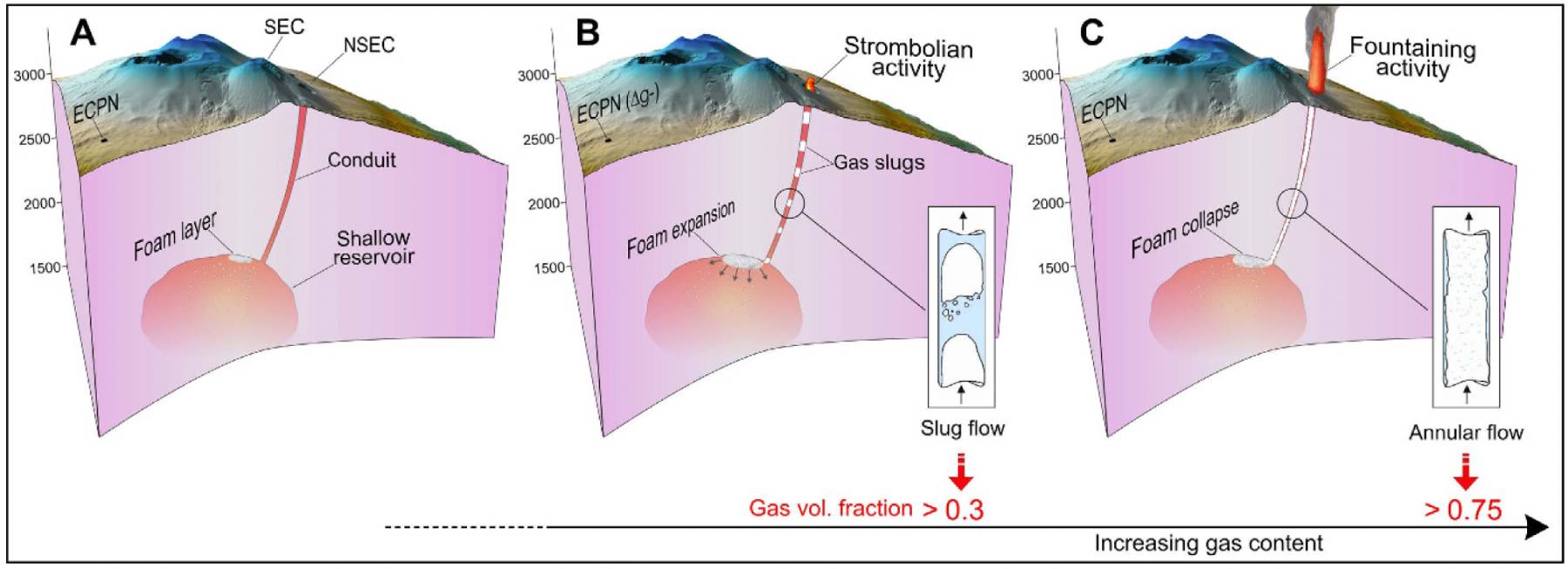
Interpreted gas accumulation and gas output from gravity data before and during lava fountaining episodes at Mt. Etna, Italy, from Carbone et al. (2015). (A) The first stages of accumulation of the foam layer in the reservoir take place. (B) Gas leakage occurs from the foam, and bubbles form gas pockets at the conduit entrance. The flow regime gradually changes from bubbly to slug flow, leading to the onset of mild blasts. (C) The feedback loop involving the increase of the gas volume fraction in the conduit and the decrease of magma pressure results in further growth of the foam that eventually collapses. Transition from slug to annular flow takes in the conduit coincides with lava fountaining.
The primary natural sources of surface deformation are from the motion of tectonic plates that make up the crust and by heat from the core and mantle. These sources are manifested as surface deformation via motion along faults and upwelling of molten rock at volcanoes and mid-ocean ridges. However, the strain accumulation caused by plate motion often requires sensitive instruments to detect. Similarly, in volcanic systems, movement of magma below the surface is often unaccompanied by an eruptive event, but precise measurements can enable us to observe surface deformation.
Many of the events leading to surface deformation are caused by the movement of subsurface mass. In a volcanic system, deformation is typically caused by the subsurface movement of magma. Understanding how a volcanic system behaves requires knowledge about the movement of subsurface mass.
Gravity monitoring has been carried out on volcanoes in more than 10 countries. Combined surface deformation and gravity change measurements have been used in many cases to estimate mass changes important for the interpretation of magma movements. This may ultimately lead to better prediction of volcanic eruptions (Rymer 1993; Williams-Jones and Rymer 2002). Continuous gravity measurements have also been used (e.g. Berrino et al. 2006). An example of how discrete and continuous gravity observations can be used together to get a more complete picture of the spatial and temporal characteristics of volcanic processes is given by Carbone et al. (2003).
Development of magma chambers in volcanoes has been monitored (e.g., Battaglia et al., 2008; Carbone et al. 2017). Both campaign and continuous gravity observations have made valuable contributions, and volcanic eruptions have been correctly predicted.

Xblue gravimeter sensing gravity at Mt. Etna, Italy.